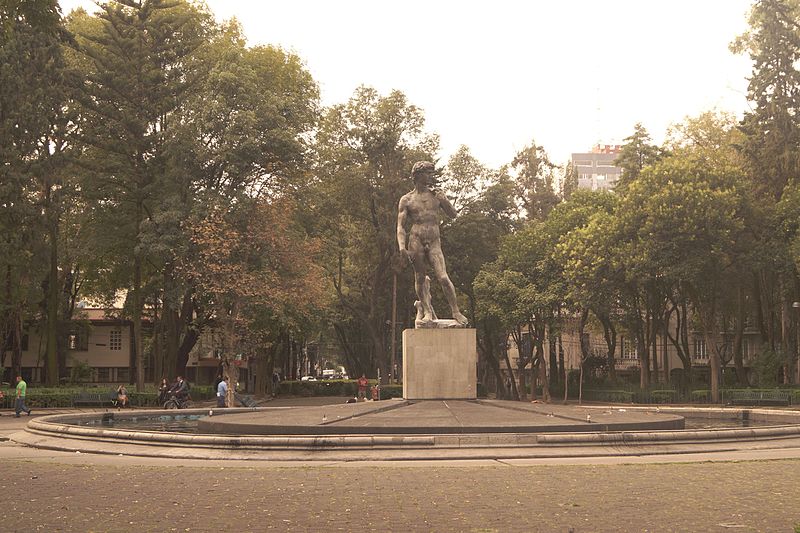
__
“I’ve never felt salvation in nature.
I love cities above all.“
—Michelangelo
The Plaza Rio de Janeiro is a great example of Mexican “eclecticism.” Beautiful buildings, all of varying architectural styles, forms and colors. The plaza is a wide space of trees and plants, and all centered around a full scale replica of Michelangelo’s “David.” It’s an eclectisism of styles, but also of history, art, and even geography.
Originally conceived as the “Parque Roma” by the developers way back in 1903, the place later came to be known to residents as Orizaba Park, for the street that crosses the park from north to south. There are two different stories as to why it came to be known as the Plaza Rio de Janeiro. The first has it that the name was changed to honor Brazil’s centenary of independence in 1922. A second story has the park named for a peculiar brick building with a conical roof on one of its corner towers. The Edificio Rio de Janeiro was built in 1908. But, of course, there’s more.
The Edificio Rio de Janeiro is popularly known as “the Witches House” (Casa de las Brujas). This is simply because of that conical roof, said to resemble a witch’s peaked hat. Of course, the placement of the windows are reminiscent too, of a vaguely human face. A most emblematic building, today it’s all residential apartments although originally it was a luxury hotel designed by the British Engineer, R.A. Pigeon.
The park’s most remarkable element though, is undoubtedly the David statue in the center of the park. Cast in bronze, not much more is known about it. It was placed here in 1976, presumably by the park architect, Juan Alvarez Ordoñez. The project was lead by the Mexico City government to reshape the neighborhood. Of course, Michelangelo here also completes a dialogue with the copies of the Davids of both Verrochio and Donatello. These two grace a single fountain on Avenida Álvaro Obregón at the intersection with calle Medellin, a few blocks south and west.
But this is Roma, not Florence. The Plaza Rio de Janeiro remains one of the neighborhood’s most iconic landmarks. Equidistant from all of these places, and the Mercado el 100, the Jardín Pushkin, and the Glorieta de Insurgentes to the North and West, one easily gets the idea why it’s such a popular neighborhood for strolling.

Nearest at 0.04 kms.
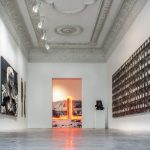
Nearest at 0.13 kms.

Nearest at 0.14 kms.


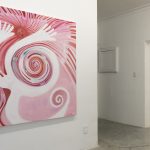
A new private space for one of Mexico City's most influential cultural figures...
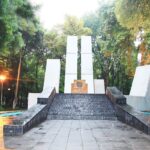
One of the city's favorite parks is in Condesa and it's nearly a hundred years old.

An academic institution and an important center for learning, arts, and culture, the Casa is the most prominent address on Álvaro Obregón.

Digging into the urban, cultural, and design issues that keep The City turning, it's a major Colonia Roma focal point.
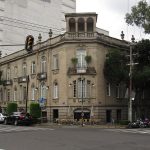
One of the most exceptional of Roma Norte's many distinguished buildings...